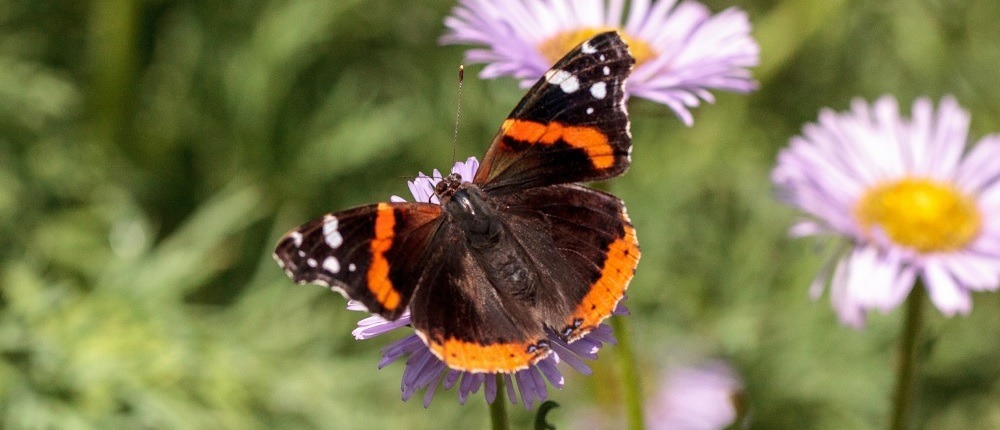Why Are Butterflies Important?
Butterflies are always wonderful to behold! The stunning colours and patterns of these gorgeous creatures are truly captivating and never fail to lift your spirits. But butterflies are an increasingly rare sight in Britain. A shocking 70 species have become extinct in the last 150 years. Two-thirds of the remaining native species are currently in decline. Many are seriously threatened and are listed as priority species in the UK biodiversity Action plan.
The loss of the butterflies is bad enough in itself. However, the situation is even more serious than you might think. The presence of butterflies indicates a healthy ecosystem. One in which diverse invertebrates can be found. These species are vital for pollination and pest control. Butterflies are also crucial to the food chain as they are prey for birds and bats, many of which are themselves threatened with extinction.
The fragility of butterflies means that they are quick to react to changes in the environment. The fact that so many have disappeared or are struggling is a warning that all is not well. It is vital that every possible measure is taken to create habitats in which butterflies are able to thrive. The restoration of wildflower meadows, field margins and hedgerows could make all the difference. Simply featuring plants in your garden which attract butterflies will make a contribution to their recovery.
The North Wales Wildlife Trust provides a comprehensive guide to the butterflies of North Wales.
Butterflies At The Woollen Mill
When we moved to The Woollen Mill, we were immediately struck by the number of butterflies in the garden. The flashes of colour seemed rather wondrous after life in suburbia where butterflies were almost nonexistent. At first, we thought that we were being visited by a multitude of butterflies simply because we were living in the countryside. But it soon became apparent that the situation wasn’t quite as simple as that. After all, we have always walked in rural areas but had never seen quite so many butterflies in one place.
As we began to explore the lanes around the mill, we quickly realised why the butterflies were thriving. The local farmers have left field margins for wildlife and the fields are bordered by traditional hedgerows. Better still, there is a large uncultivated meadow next door in which many wildflowers grow. After we had been here for a few weeks, the field in front of the mill was planted with beetroot and when the plants began to grow, literally thousands of small whites appeared. It was a fabulous site and things got even better when some of these butterflies started to visit our garden.
Talking of our garden, it was in a bit of state when we bought the property, although there were a few plants and shrubs which had survived and some of these were attractive to butterflies. We set about digging over and replanting every area of the garden, taking care to feature species which would attract more of our colourful visitors. The planting has certainly worked!
WHICH BEAUTIFUL BUTTERFLIES WILL YOU SEE?
Peacock Butterfly
Found in Europe and as far east as Japan, the colourful Peacock butterfly is a stunning sight. It can be seen early in spring as it often winters in buildings and is found in woods, fields, meadows and gardens. The four large eyespots on the peacock’s wings are an anti-predator defence mechanism which causes birds to pause before attacking. However, the eyespots are ineffective against predatory rodents as the butterfly usually encounters these animals in the dark and so employs a hissing signal to scare them. This is a relatively common butterfly but a curiously rare site at the mill.
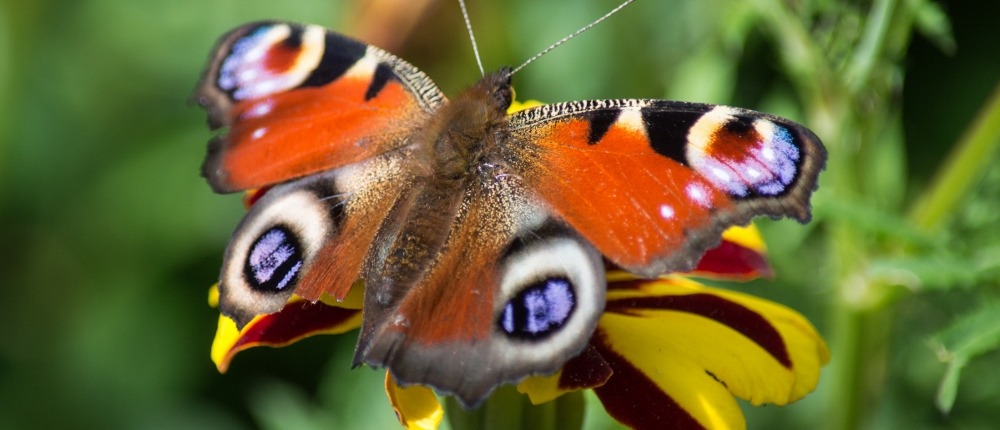
Wall
Found primarily in coastal regions, the Wall is similar in appearance to the Gatekeeper but more heavily patterned. It is well-named as it basks on walls and rocks! This butterfly’s light brown underside provides excellent camouflage on sandy ground and it can be seen basking in open areas on sunny days. The wall is rarely found in large numbers anywhere and is sadly in decline. Of high conservation importance, this butterfly’s struggle is now thought to be due to climate change as warmer conditions are causing the larvae to hatch later in the year. But you can still see Walls in this region, albeit occasionally.
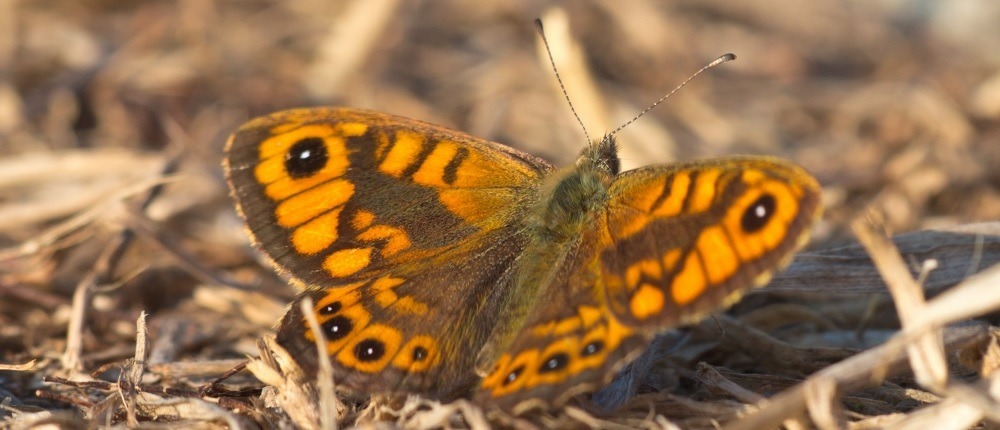
Small Tortoiseshell
Boy do we see a lot of these in the garden, not to mention in the lanes around The Woollen Mill! The Small Tortoiseshell is such a beautiful butterfly and although relatively common, is of increasing conservation concern. Frequenting a variety of habitats, it is one of the first butterflies that you will see in spring and often visits garden flowers in large numbers. The Small Tortoiseshell is particularly fond of the field scabious we have planted and we frequently see four or five butterflies on a single plant. You will almost certainly encounter these butterflies if you visit in spring or summer and you might be surprised by just how many you see.
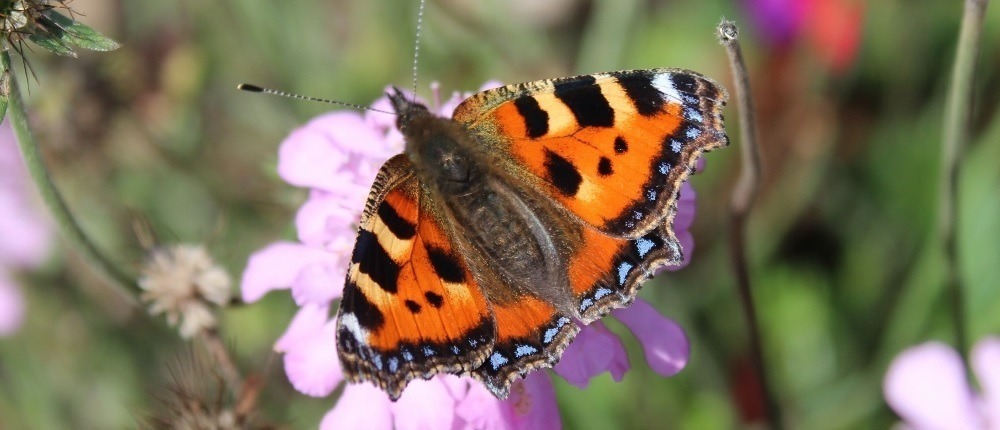
Painted Lady
We love painted ladies and they love our garden! Which is something of a surprise as this colourful species tends to favour dry areas. Dry wouldn’t be the first word that springs to mind when describing North Wales! But visit they do and when they arrive, there can be dozens of them flitting between the flowers. The Painted Lady is a migrant butterfly that spreads northwards from the Middle East, central Asia and North Africa. It should therefore come as no surprise that the best time to see them here is late summer when they fill our front garden with splashes of orange and compete with the Small Tortoiseshells for the field scabious.
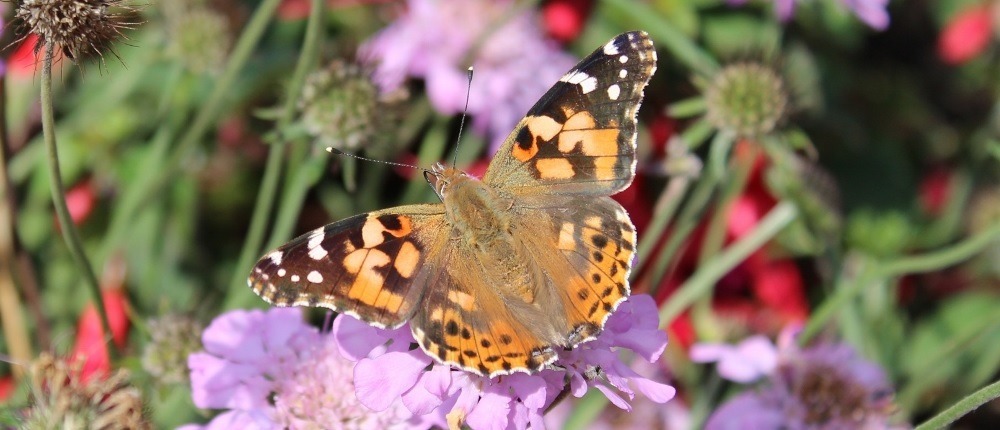
Speckled Wood
These butterflies love the small meadow that lies beyond the woodland opposite the mill. In the summer months, you will see dozens of them flitting about above the grass as if engaging in an elaborate dance. The speckled wood is currently of low conservation concern as having been in decline in the early 20th century, it has since recovered and continues to expand its range. This is certainly one of the hardest butterflies to photograph! We rarely see one resting for more than a couple of seconds which is barely enough time to get the camera out let alone frame a shot.
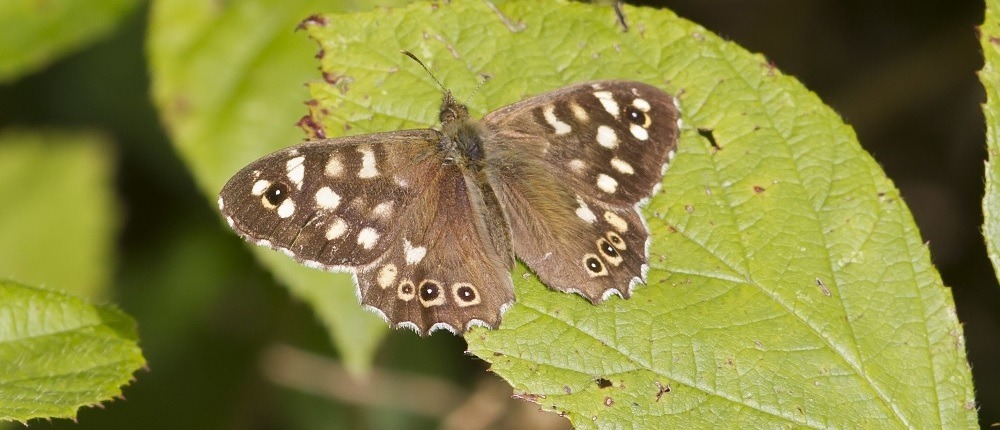
Small White
Small whites visit The Woollen Mill in their hundreds! The field of beetroot opposite is clearly like caviar to these butterflies which swarm all over it. That is until the farmer puts his sheep in there to eat the tops of the plants! There’s nothing unusual about seeing a small white in any garden but it is truly amazing to see hundreds of them all at once! In addition to loving beetroot, these butterflies also seem to adore the flowers in the garden and so there are always a few small whites about the place.
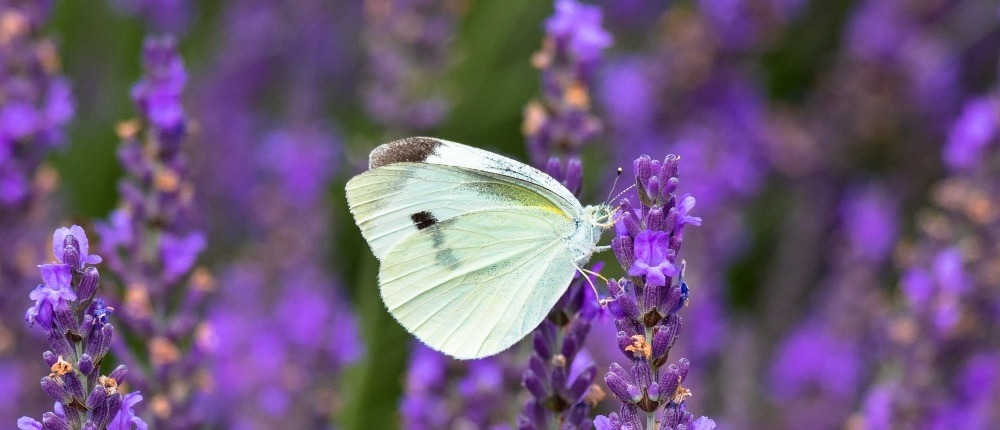
Orange Tip
A wonderful sight in spring, the Orange Tip emerges early to light up the landscape. The male has orange tips to the wings while the female doesn’t and is easily mistaken for the small white. In both sexes the undersides of the wings are mottled with moss-green. Orange tips favour hedgerows and woodland margins and are common throughout England and Wales. You can see them around The Woollen Mill between April and July, often in the Hedgerow to the front of the property. We know spring has arrived when we catch a glimpse of those wonderful flashes of orange.
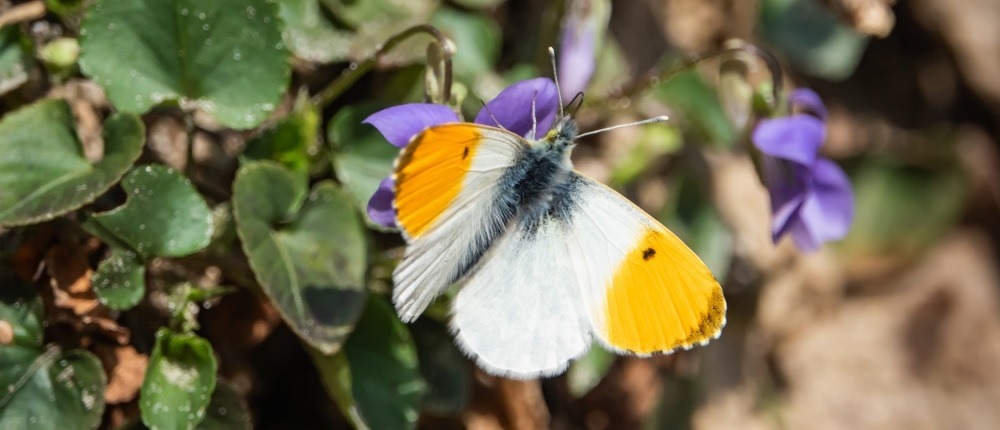
Red Admiral
Although a relatively common sight throughout the UK, most Red Admirals are migrants from Central Europe and North Africa. This pretty butterfly will frequent diverse habitats from seashores to mountains and you are most likely to see a Red Admiral in summer or early autumn. Some specimens do manage to survive the winter in the UK and this species is not of conservation concern – yet. You will spot Red Admirals around The Woollen Mill and surrounding lanes. We have planted buddleia in the garden, a flowering shrub which Red Admirals are attracted to in the hope of temping a few more to visit.
